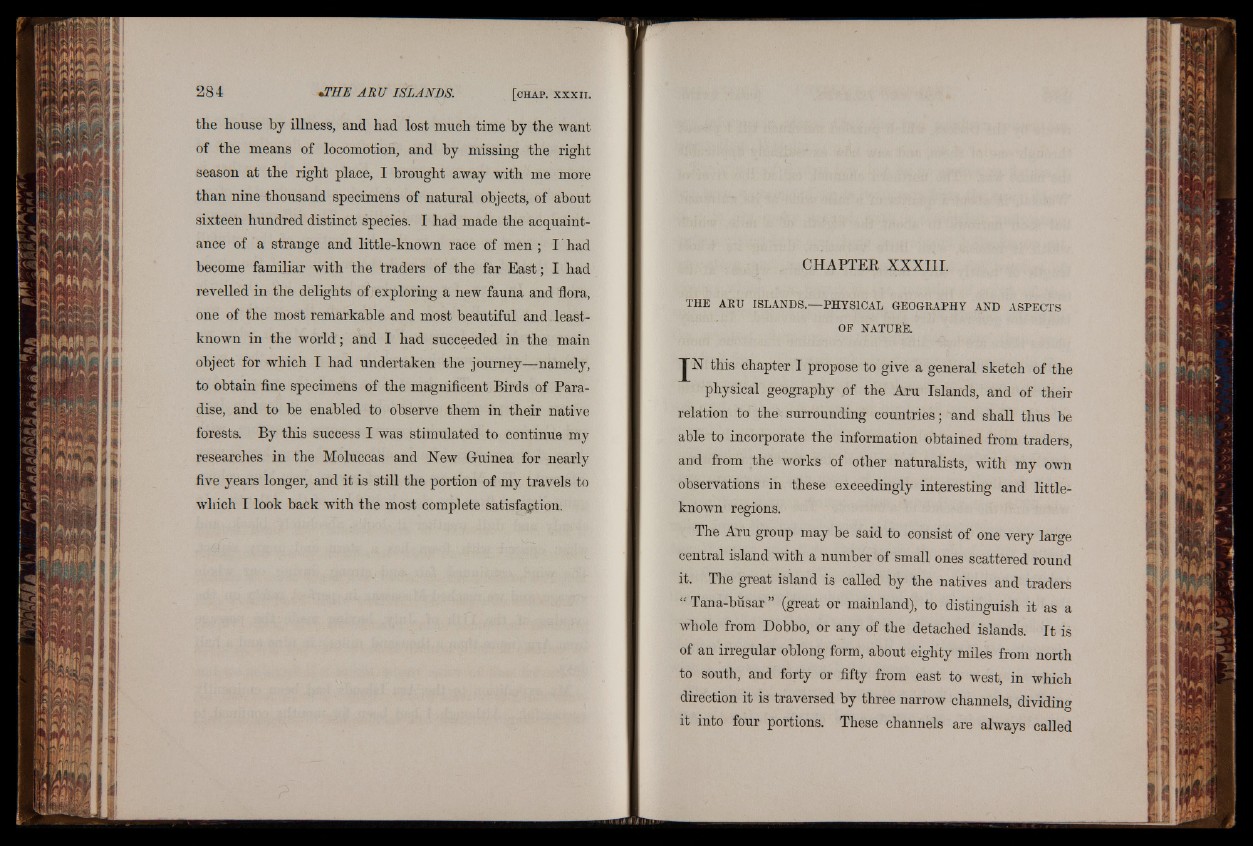
the house by illness, and had lost much time by the want
of the means of locomotion, and by missing the right
season at the right place, I brought away with me more
than nine thousand specimens of natural objects, of about
sixteen hundred distinct species. I had made the acquaintance
of a strange and little-known race of men ; I had
become familiar with the traders of the far East; I had
revelled in the delights of exploring a new fauna and flora,
one of the most remarkable and most beautiful and least-
known in the world; and I had succeeded in the main
object for which I had undertaken the journey—-namely,
to obtain fine specimens of the magnificent Birds of Paradise,
and to be enabled to observe them in their native
forests. By this success I was stimulated to continue my
researches in the Moluccas and New Guinea for nearly
five years longer, and it is still the portion of my travels to
which I look back with the most complete satisfaction.
CHAPTER XXXIII.
THE ARU ISLANDS.— PHYSICAL GEOGRAPHY AND ASPECTS
OF NATURE.
TN this chapter I propose to give a general sketch of the
physical geography of the Aru Islands, and of their
relation to the surrounding countries; and shall thus be
able to incorporate the information obtained from traders,
and from the works of other naturalists, with my own
observations in these exceedingly interesting and little-
known regions.
The Aru group may be said to consist of one very large
central island with a number of small ones scattered round
it. The great island is called by the natives and traders
“ Tana-busar ” (great or mainland), to distinguish it as a
whole from Dobbo, or any of the detached islands. It is
of an irregular oblong form, about eighty miles from north
to south, and forty or fifty from east to west, in which
direction it is traversed by three narrow channels, dividing
it into four portions. These channels are always called